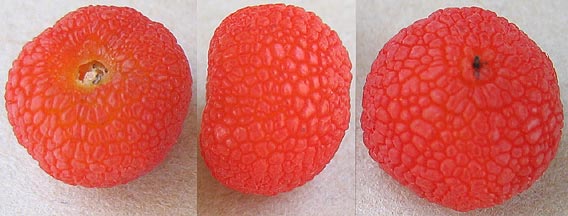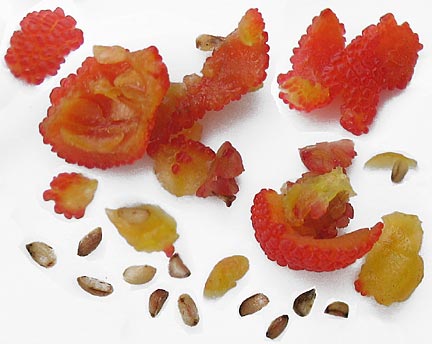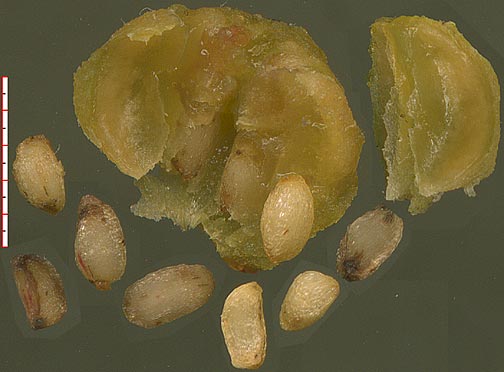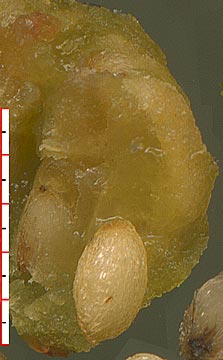

November berries (with previous year's hardened, black berries). |
Ripe December berries. |
|---|
My advice is to collect fully ripe berries from a nearby madrone during November and December, while the fruit is still juicy.

The seeds are encased in a 'nutlet' shell, called a pyrene, beneath the fleshy outer layer of the berry.

The pyrene contains 5 compartments, corresponding the 5–celled ovary of the flower. Each cell may contain several seeds, but at most one mature seed per cell seems to be most common. In one rare exception, a very large and ripe berry had 15 seeds. Most seeds are in the 2–3 mm. range. There seems to be considerable color variation; but black seeds are not viable.


Pyrene dissected (seeds are not all from the same berry). |

Pyrene section enlarged. |
|---|
At first I tediously extracted all and only the seeds for planting - a waste of time. These days I first remove the outer fruity pulp. Then, holding the pyrene in a cup of water, I gently crush it with my fingers, freeing up the seeds. Then I soak and rinse the whole mess in rain water in order to remove any remaining fruit juice, but leaving pyrene fragments. From the final rinse I spoon out the seeds (and other stuff) and water into a loose cedar-mulch medium, and wash them into the medium with rainwater. (I don't otherwise cover the seeds.)